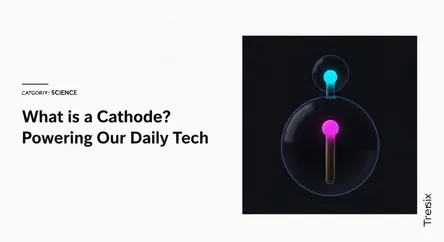Science
What is a Cathode? Powering Our Daily Tech

An essential component in every battery, the cathode is where the magic of energy storage happens. Discover its role in powering your world.
What is it?
A cathode is an electrode where a chemical process called reduction occurs. In simple terms, it's the part of an electrochemical cell, like a battery, that gains electrons. The flow of electrons from the other electrode (the anode) to the cathode is what generates an electrical current. While it's typically the positive terminal in a device that's providing power (like a battery in use), its polarity can be negative in a device that's consuming power to drive a reaction (like a battery being charged). Cathodes are fundamental components in batteries, fuel cells, and vacuum tubes.
Why is it trending?
Cathodes are at the heart of advancements in energy storage technology. The performance, capacity, and lifespan of lithium-ion batteries—which power everything from smartphones to electric vehicles—are largely determined by the cathode's material composition. Researchers are constantly innovating with new cathode chemistries, such as nickel-rich materials and sodium-ion technologies, to create batteries that are more energy-dense, longer-lasting, and more environmentally sustainable. These developments are crucial for the transition to renewable energy and the expansion of the electric vehicle market.
How does it affect people?
The technology inside cathodes directly impacts daily life. Improvements in cathode design lead to longer battery life for phones and laptops, and increased range and reduced cost for electric cars. The choice of materials, such as lithium, cobalt, and nickel, has significant environmental and economic consequences related to mining and recycling. As we increasingly rely on battery-powered devices and transportation, the ongoing development of efficient and sustainable cathodes is essential for technological progress and a greener future.